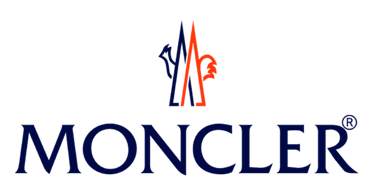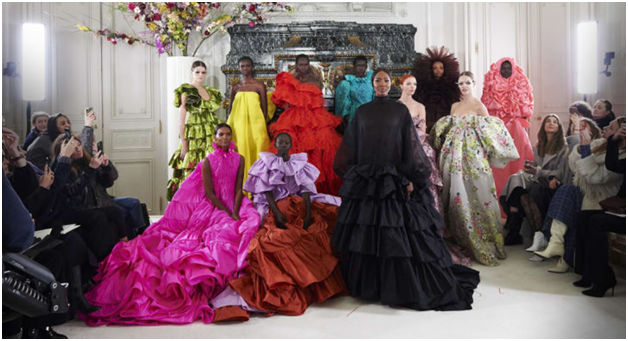Check out this company’s GENIUS strategy to connect with consumers every day! [Monday: Marketing Marvels]

In a past “Marketing Marvels” article, we featured the marketing strategies of luxury coat maker Canada Goose and its 2018 investment plan in China, which includes:
- A regional headquarter in Shanghai.
- Flagship stores in Beijing and Hong Kong.
- An e-commerce branch on Alibaba’s T-Mall platform.
Less than 4 months later in the same year, one of Canada Goose’s rivals, an Italian company, followed suit and said it will also partner with T-Mall to launch a pop-up store in China.
What is that company?
Moncler S.p.A.!

Moncler is a luxury fashion brand mostly known for its ski wear products. It was founded in 1952 by French entrepreneurs René Ramillon and André Vincent and bought by Italian businessman Remo Ruffini in 2003.
Ruffini transformed the company into an exclusive fashion brand, reinventing its marketing model not once, not twice, but thrice over the course of 15 years.
One of the strategies under Moncler’s current marketing model?
The “Genius” Strategy, which began in 2017!

The strategy blends the concept of fashion collaborations (partnerships that produce one-off products that sell for a limited time) and “drop” culture (creating online hype for regular limited edition items and selling them to customers) by appointing 8 creative directors who design a series of fashion collections released all year round.
This means instead of launching its collections every 4 months only, Moncler fills up its customers’ social media feeds with fashion news and trends every day to keep them engaged.
According to Ruffini, the Genius strategy allows for a more regular conversation with consumers. It also provides more content and ideas to keep customers excited about monthly releases of new fashion collections.
4 of Moncler’s 8 appointed creative directors are:
- Pierpaolo Piccioli, who made it to news headlines with his couture show in Paris in January 2019.
- Craig Green, one of London’s most famous menswear designers.
- Richard Quinn, who Queen Elizabeth II herself awarded with the inaugural Queen Elizabeth II Award for British Design during the London Fashion Week in 2018.
- Simone Rocha, a widely celebrated London-based designer.
These are just half of the creative directors and yet we can see their credentials will really make a BIG impact for the company!
Here are some of their masterpieces for Moncler under the Genius strategy:



What does Moncler do to increase awareness about its Genius strategy and reach its target market, particularly millennials and Gen Zs?
#1: INSTAGRAM
Each fashion collection created by Moncler’s creative directors are “unique and immersive,” making them distinctly “Instagrammable.”
… and as a business owner or marketer, you probably know that tailoring experiences to social media is an important tool to connect with a lot of consumers!
For Moncler, posting its Genius fashion collections on Instagram is a way to keep consumers engaged. Plus, it’s also a smart move because the initiative has attracted a younger demographic.
According to CEO Ruffini, using Instagram has helped improve the company’s visibility and brand perception. He said:
“Honestly, I’m happy. For sure, we can do better but I’d like to think that at least, we are facing a new era, a new adventure. This is what I’m really looking for.”
#2: WECHAT
According to data from McKinsey & Company, China has a massive market where a lot of consumers have high purchasing power.
Because of that, Moncler has shifted its strategy from just focusing on the European market to also catering to an international market.
Using Tencent’s WeChat platform is one of the ways the company does that!
By launching its first WeChat store in 2017, Moncler was able to communicate with interested and wealthy Chinese consumers, prioritize digital channels in the country, and cater to Chinese online shoppers while fueling social buzz around the Genius fashion collections.
At present, the company is in the process of backing its WeChat store by opening 30 to 40 wholesale and direct-of-sale stores in China.
Here are some results of Moncler’s Genius strategy:
- The company was able to generate EUR 90 million in earned media value.
- Moncler’s website traffic and brick-and-mortar stores traffic increased by 59%.
- The company’s overall sales revenue grew from EUR 1 billion in 2016 to EUR 1.2 billion in 2017.
Based on these data, we can see that Moncler’s marketing efforts under the Genius strategy have proven effective in sending the right message to the right target audience at the right time!
In the past five years, Moncler S.p.A. has recorded revenues of:
- EUR 1.0 billion in 2016
- EUR 1.2 billion in 2017
- EUR 1.4 billion in 2018
- EUR 1.6 billion in 2019
- EUR 1.4 billion in 2020
Moncler aims to keep the positive momentum going with massive expansion plans in the coming years. According to CEO Ruffini, the company will keep pace with a fashion market that seeks innovation to constantly provide value and satisfaction for consumers around the globe.
Moncler S.p.A.’s Earning Power: Valens Research vs. As-reported numbers
Moncler S.p.A. (MONC:ITA) makes for a great case study that we come back to regularly. One great reason?
The company has proven itself to be a better earning power generator than investors might think.
So, how well has Moncler been growing its business in the past years?
The research doesn’t lie—nor do the results. Earning power (the blue bars) continues to show results higher on average than what traditional databases show.

The blue bars in the chart above represent Moncler’s earning power (Uniform Return On Assets). Historically, Moncler has seen generally robust but cyclical profitability. Its Uniform ROA ranged from 20% to 85% in the past ten years, or an average of 53%. Uniform ROA is at 25% in 2020.
The global ROA is just 6%.
The orange bars are the company’s as-reported financial information. If you relied on these numbers, you will see a company with understated profitability. As-reported ROA (return on assets, a measure of earning power) only ranged from 8% to 17% in the past ten years. Its as-reported ROA in 2020 was only at 9%, which is nearly 3 times lower than its Uniform ROA in 2020.
That’s what you’ll see in Yahoo Finance, Google Finance, and most other databases.
The company’s stock price also performed better than the rest of the stock market over the decade, which we can see in the blue line in the chart below. Its returns have been well above the market.

The numbers show that Moncler has been doing well and making a profit.
According to CEO Ruffini in one of his interviews in 2019 regarding the company’s Genius strategy,
“You cannot talk to your customers every six months only; you need to talk [to them] every day.”
For Ruffini, Moncler’s success is based on the ability to adopt stringent sustainability standards for its products and engage with its target market on a constant basis.
… in this case, using Instagram and WeChat to “stay present in the hearts, minds, and social media feeds of consumers.”
Moncler’s ultimate goal?
To get its loyal customers and a younger generation of fashion enthusiasts around the world to talk about the brand!
About The Dynamic Marketing Communiqué’s
“Monday Marketing Marvels”
Too often, industry experts and the marketing press sing the praises of some company’s marketing strategy.
…Only for the audience to later find out that their product was a flop, or worse, that the company went bankrupt.
The true ROI in marketing can’t be separated from the business as a whole.
What good is a marketing case study if one can’t prove that the company’s efforts actually paid off?
At the end of the day, either the entire business is successful or it isn’t. And the role of marketing is always paramount to that success.
Every Monday, we publish a case study that highlights the world’s greatest marketing strategies.
However, the difference between our case studies and the numerous ones out there, is that we will always make certain that the firm really did generate and demonstrate earning power worthy of study in the first place (compliments of Valens Research’s finance group).
By looking at the true earnings of a company, we can now rely on those successful businesses to get tips and insights on what they did right.
We’ll also study the greatest marketing fails and analyze what they did wrong, or what they needed to improve on. We all make our mistakes, but better we learn from others’ mistakes—and earlier, rather than later.
Hope you found this week’s marketing marvel interesting and helpful.
Stay tuned for next week’s Monday Marketing Marvels!
Cheers,
Kyle Yu
Head of Marketing
Valens Dynamic Marketing Capabilities
Powered by Valens Research
www.valens-research.com




